Weird Polish Foods
Poland has a lot of weird dishes that survived until these days for years and years. Many recipes were invented centuries ago, what we can see from the oldest Polish cookbook – Compendium Ferculorum first put in print in 1682.
I was actually really into food history when I was pursuing my History degree in Poland, so I can introduce you to some of the weirdest dishes that are very popular in modern Poland.
If you’re looking to try some weird Polish foods you’re in the right place! Also check my ultimate list of the traditional Polish dishes to try when in Poland!
1. Czernina
Czernina, also known simply as ‘duck soup’ is, as the name suggests, made from a thick broth made from duck blood and clear poultry broth.
Although it’s not just made of duck, it can be made using chicken, rabbit or pig.
Czernina used to be served in old Poland as a sign of refusal to an applicant for a hand, hence another name for it – the black soup. You can read about it in one of the most famous epic poem by A. Mickiewicz – Pan Tadeusz.
It’s not an extremely popular dish these days, especially with the rising awareness of dishes maltreating animals (similar to foie gras), but my grandparents were talking about it a lot. I only saw it in a very traditional restaurant in Masurian districts.
2. Kaszanka
Another bloody dish. Traditional Polish Kaszanka is made from pig’s blood and buckwheat (kasza), seasoned with onions, salt and pepper and marjoram. All stuffed in the pig intestines.
It’s usually sliced, fried with onions and served with a bit of horseradish. It’s certainly an acquired idea and taste but it’s definitely a staple at Polish traditional events and meals.
Another variant of kaszanka is kiszka (Keesh-KAH) or krupniok (Kroop-nioh) that comes from Silesian district of Poland. It’s slightly smaller and filled with groat instead of buckwheat.
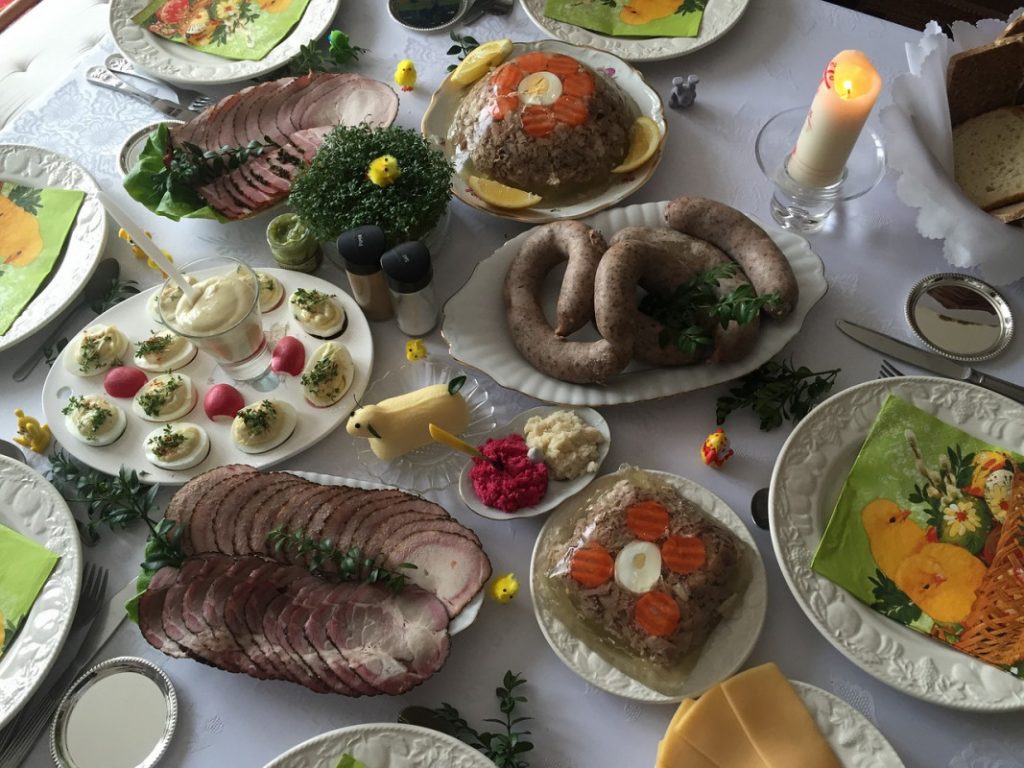
3. Smalec
Smalec is very common on Polish tables. I remember my mom preparing it when I was a kid and I couldn’t believe that someone could consume it. I gave it a go last year and it’s still a no-no for me.
Smalec is basically pig fat melted in a pan with the onion and sometimes pieces of bacon. In English it’s commonly referred to as lard.
Note: if you’re a vegetarian or vegan visiting Poland make sure that they won’t put smalec on your pierogi or cook crepes in it. Many more traditional restaurants top their dishes with pork rinds from smales – better to make sure in advance.
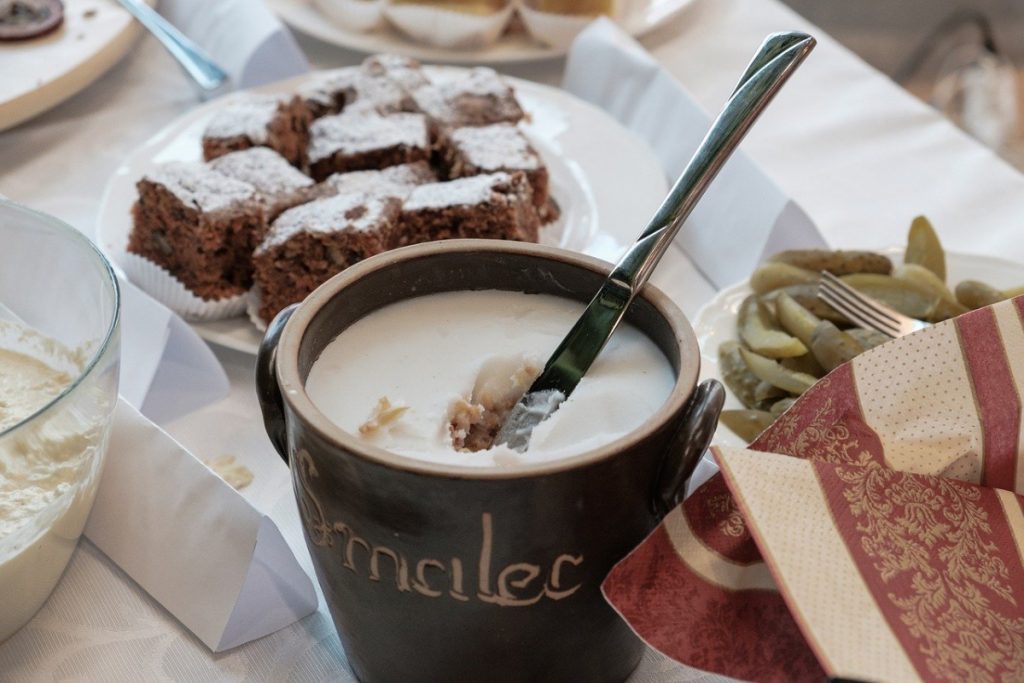
4. Flaki
Flaki (FLAH-kee) is actually a very famous soup in various Eastern European countries, due to – as some may say – its miraculous function as a hangover remedy.
It’s basically cow’s tripe cooked in broth and often served during Polish weddings for breakfast.
I have never tried it and I don’t think I’m going to – the smell always scares me away, but my father used to eat it weekly.
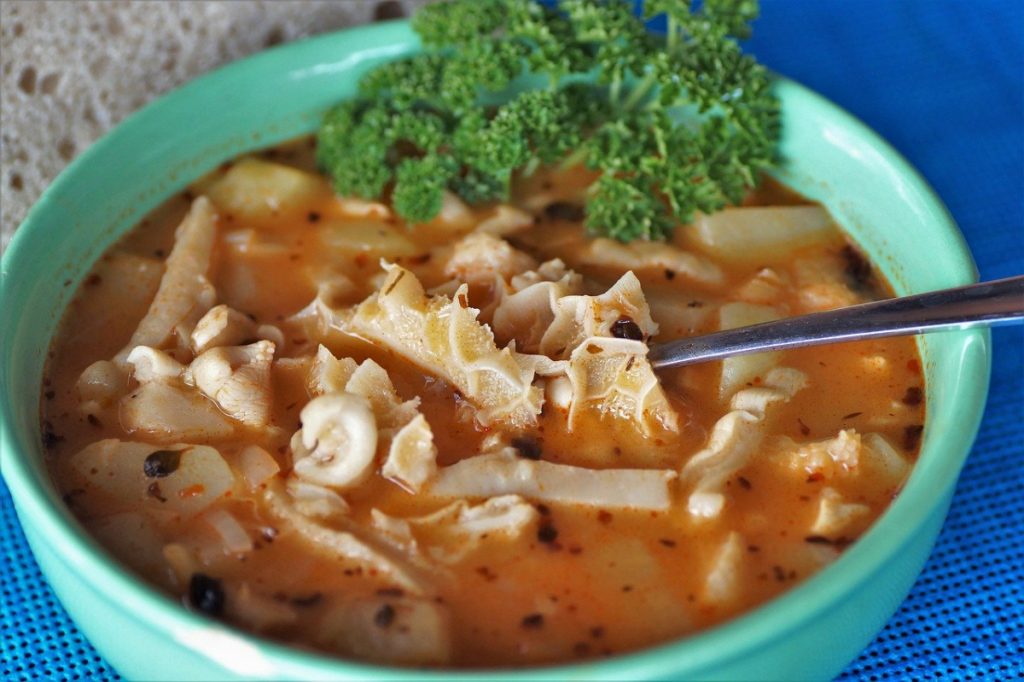
5. Nóżki w Galarecie
Literally ‘little feet’, these are a jellied pig or cow feet. The cooked meat is simmered in grayish gelatin with some herbs and usually carrots and peas.
Nozki w galarecie are also usually served with horseradish.
Another variant of nóżki is jellied fish, usually carp. Although this dish was originally a Jewish tradition, nowadays it’s commonly served at Christmas.
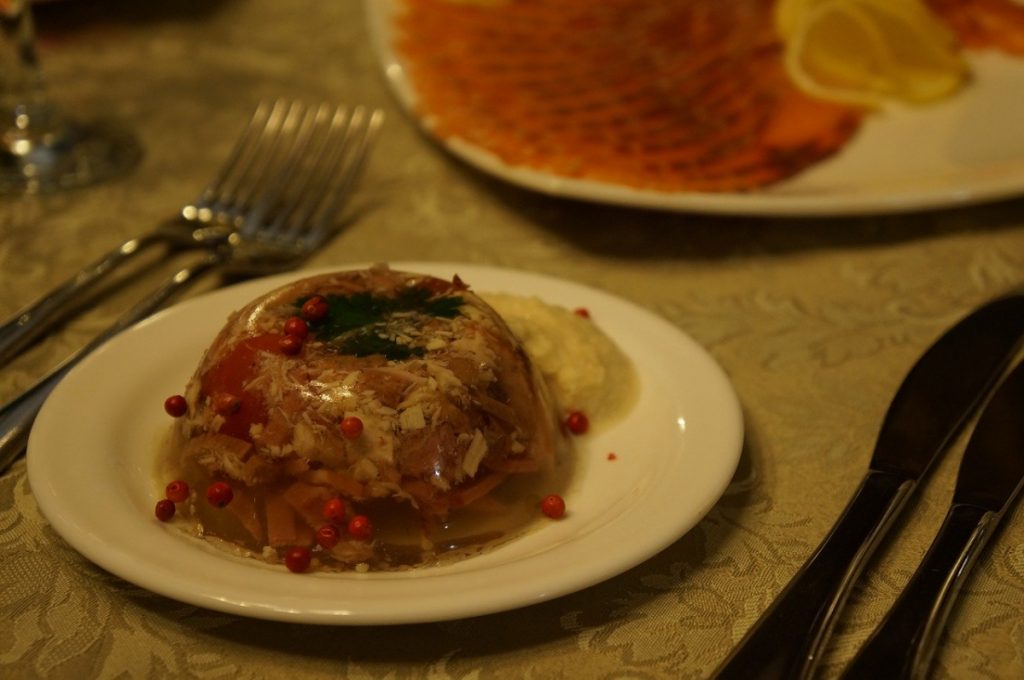
6. Fruit Soup
Fruit soup was my nightmare in kindergarten when I was simply refusing to eat it every time until the teachers accepted that there is no way in this world to convince me to eat it. I was a stubborn child after all.
It’s a warmish fruit soup/cocktail that contains overcooked cherries or strawberries and often a bit of milk and pasta.

7. Zsiadle Mleko
Zsiadle mleko is something you either love or hate. It’s soured milk produced by the acidification of milk. You can make it yourself as long as you have a fresh cow’s milk and not boxed UHT milk from the store.
You leave the milk out of the fridge for the night and the next day you get it spli into two layers which you mix together and voila!
My mom loved it, I was never a fan. It has a tart taste.
Zsiadle mleko is a friend of more well-known product – kefir. Kefit came to Poland from Turkey (ayran), but Poles adopted it kindly. The process of fermentation is similar but requires bacterias so you cannot make it yourself.

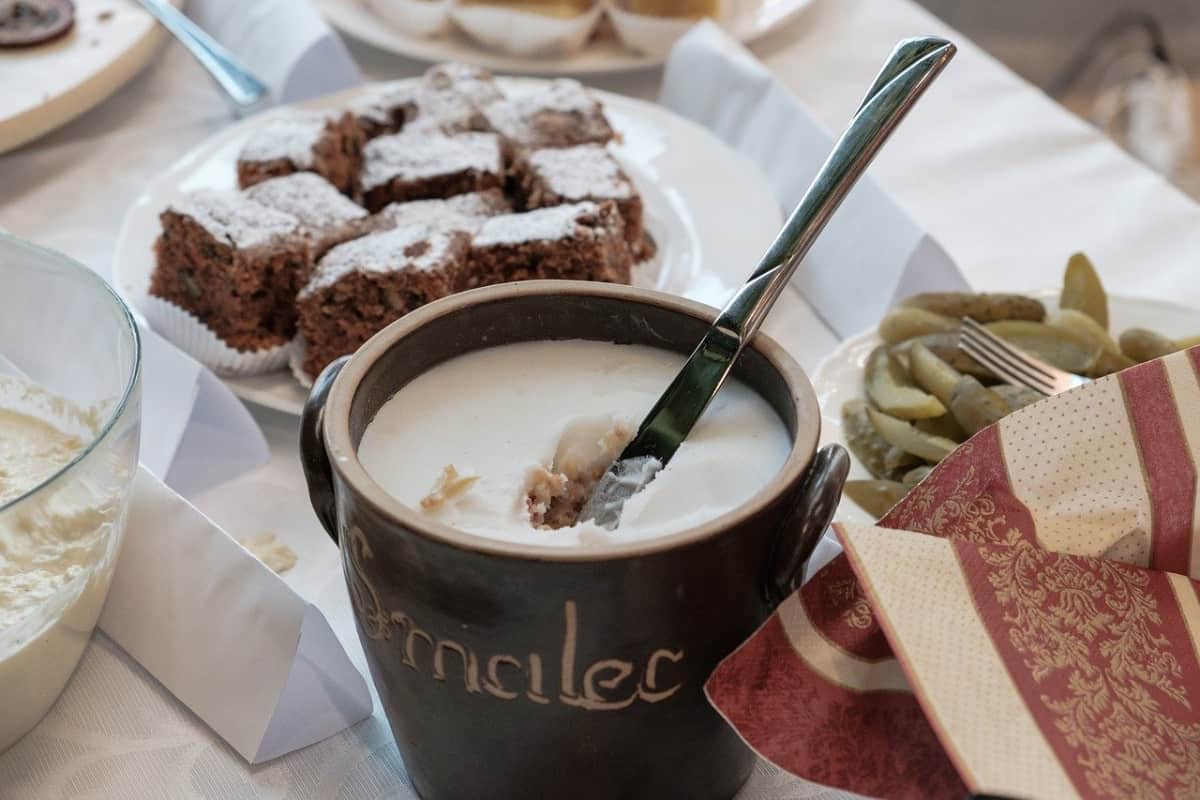


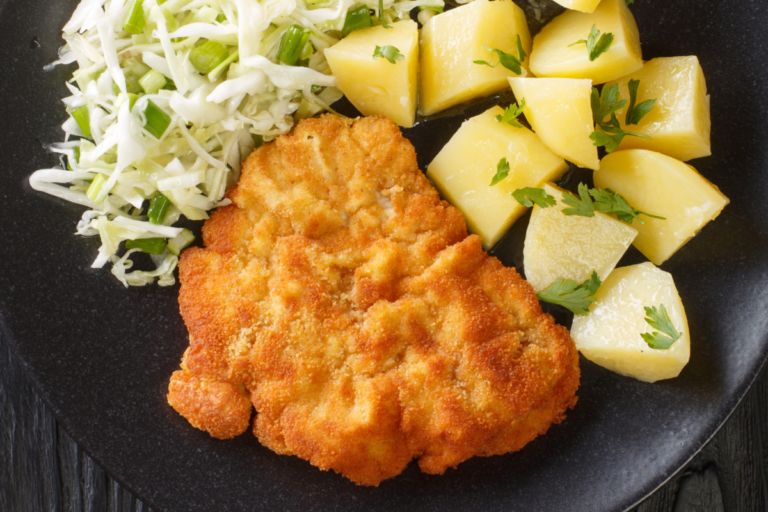
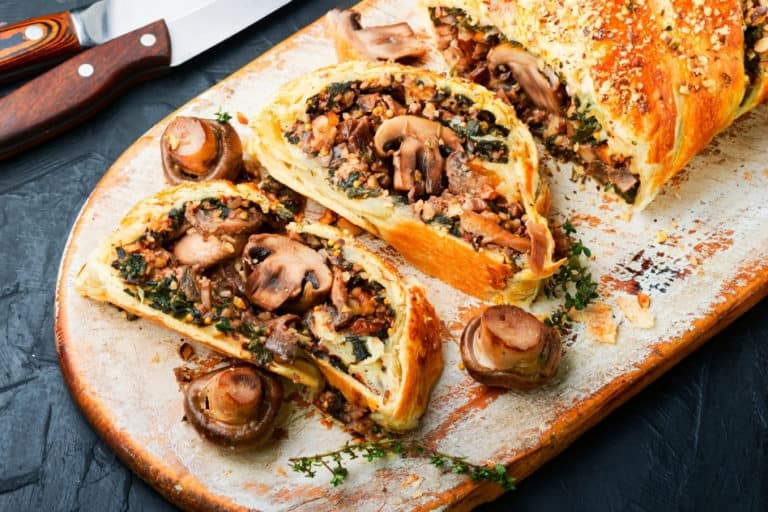
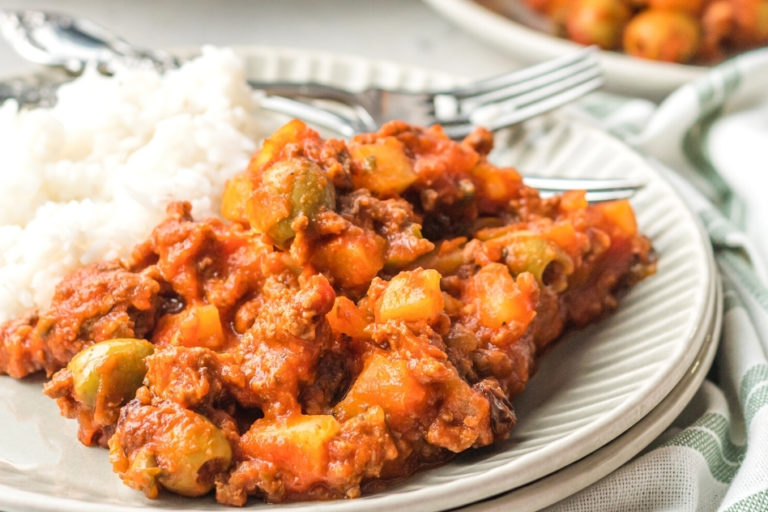

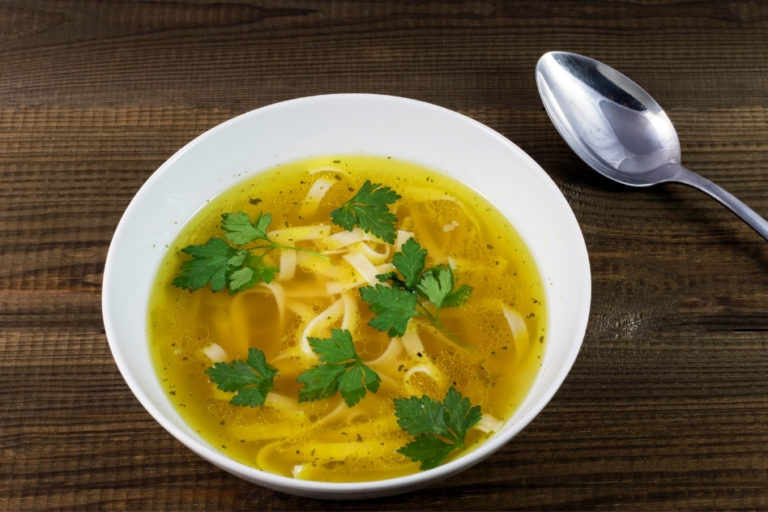
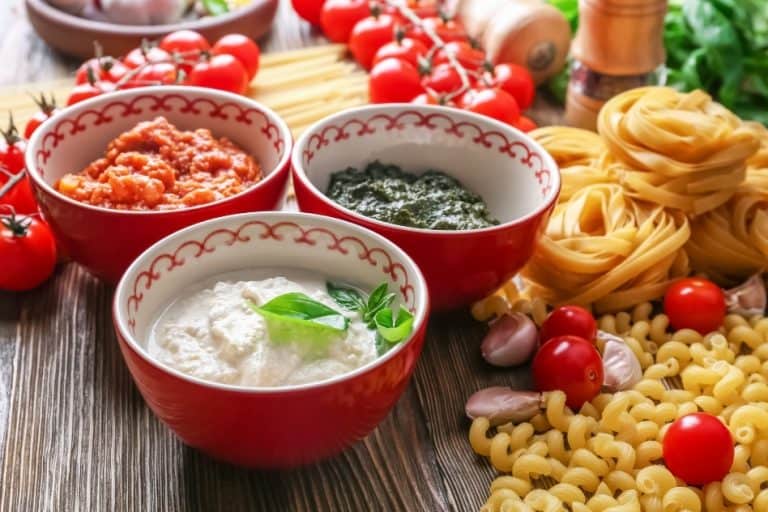

I love your stories. So interesting to read about your food and culture.
Haha, being slovak, i grew up knowing some of these. as a kid i was not a fan by any means, but now they are thinsg i’m absolutely willing to eat.
Ahh, this is bringing back memories — good ones actually — of eating fruit soup in Sweden! It really made an impression!
These are some really unusual foods!, interesting reading – thanks! Although I might stick with Bigos and Pierogi next time I’m in Poland personally!
Well, I’m Polish (living abroad) so I don’t find them weird myself, but my American husband always tells “horror stories” from his visits to Poland and seeing what we eat there. 😂 Thanks for posting this, made me drool (yummy kaszanka!)
Hi Anna
Thanks for that, nice food and dishes. I am Polish, lived my first 25 years in Poland and then I moved abroad. As many of people who commented before I don’t find these foods weird. They are just tipical and really very tasty. Actually some of them are quite similar to the food from the other countries. I live in Portugal and we have here a “dobrada” which is quite the same as “Flaki” and “nóżki w galarecie” are made in many different countries maybe with some small differences. But anyway, for me, the Polish food is the besttttttttttt. Regards